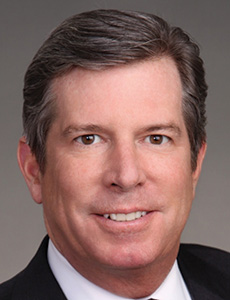What’s New in E&S? Find Out at the 2021 WSIA Annual Marketplace

Break out the passports and don your business best — the Wholesale & Specialty Insurance Association (WSIA) Annual Marketplace is back in person this November in San Diego.
Like all other gatherings last year, WSIA Annual Marketplace also closed its doors to in-person meetings in 2020, instead opting for a very successful multi-day virtual event.
But now that we see more and more operations returning to a new normal, the 2021 WSIA Annual Marketplace will be face-to-face once again this Nov. 16-19.
“Wholesale, specialty and surplus lines is a relationship-based industry, and I think that has been highlighted during the pandemic. It’s clear that WSIA members haven’t missed a beat in terms of providing top-notch service to insureds and their business partners, but we all have missed the camaraderie and collaboration that comes from meeting in-person,” said Brady Kelley, executive director, WSIA.
“We all look forward to being together and the energy that builds during our events.”
Many in the excess and surplus space are excited to be back with the crowds.
“WSIA is a great conference to build relationships,” said Duffy Koller, head of excess and surplus lines, AmTrust E&S. “2020 pulled us away from networking relationships, but now we have the chance to reconnect and figure out how we are going to put our heads together and work out solutions” for the industry’s toughest risks.
Here’s a small peek at what’s in store at 2021 WSIA Annual Marketplace and some of the key trends and happenings influencing E&S as a whole.
Looking at Excess & Surplus Lines Growth
It’s no secret E&S has seen its fair share of growth in the last several years, pandemic withstanding.

Brady Kelley, executive director, Wholesale & Specialty Insurance Association
According to NAIC, surplus lines direct premium volume was $49.9 billion at the end of 2018. Estimates further placed E&S premium volume at $56.3 billion in 2019.
Of course, 2020 took its toll. Social inflation, nuclear jury verdicts and claims costs were just some of the risk areas plaguing surplus lines right alongside traditional lines. But the COVID-19 pandemic also created an extra hurdle for the space, adding uncertainty and showing those in the industry just how vulnerable everything can be to unprecedented global economic distress.
“The long-term impacts of the pandemic may not present themselves for some time,” said Greg May, SVP, Allied World Excess Casualty Division. “As the individual states begin to return to normalcy, there will be a re-emergence of everyday exposures and a potential delay in jury trials when the courts reopen.”
2021 is proving promising, however.
E&S saw greater than 20% growth in surplus lines premium during the first half of 2021, according to MarshBerry reports. Surplus lines premium volume reached over $24 billion, with more than 2.6 million recorded transactions, in just the first half of 2021.
“Risk adjusted pricing has been the primary catalyst for the more recent E&S revenue growth. In addition, dramatic increases in loss severity trends have led to volatility management through capacity reductions,” May said.
“These capacity reductions have created significant new opportunities for the E&S market to find solutions. As the world continues to be more uncertain, the E&S market is well positioned to lead the way to a sustainable future.”
Darrell Pippin, head of E&S at Swiss Re Corporate Solution, pointed to another catalyst driving E&S growth: the expansion of needs-based placements.
“Needs-based placements could not be written in the standard market,” he explained. “As it has always done, the E&S market has developed unique and creative solutions to fill those needs. The E&S market continues to be at the forefront of filling the unique needs of emerging risks while continuing to provide the capacity for more traditional risks such as natural catastrophe exposures.”
Turning to E&S for Solution
No two market cycles have ever been the same in terms of causation, duration or resolution.
According to Matthew Power, president of One80 Intermediaries, a wholesale brokerage and program manager providing specialized insurance solutions throughout the U.S. and Canada, the current market cycle E&S is in is driven by a number of factors.
First, a prolonged period of low interest rates has affected carriers’ abilities to create value, he said, “and that low interest rate environment, on an industry-wide basis, has been a drag on earnings for carriers for over a decade.”
Then there’s COVID, a “massive economic disruption,” as Power put it. Companies faced difficulty in finding sufficient and affordable coverage in many lines of business as a result of the COVID-19 crisis.
“It’s made certain risk categories very difficult to place in the marketplace,” he said.
For E&S, however, that has meant stepping up to the plate. Experts predict greater demand for E&S solutions are expected to continue moving forward as economic uncertainty, COVID-related volatility and higher claims costs impact traditional insurers.

Matthew Power, president, One80 Intermediaries
“The pandemic pushed us into a more prominent problem-solving market. That, coupled with the catastrophes we’re seeing, are our emerging issues. It has driven us to develop new forms, evaluate pricing, see where coverage is needed and not,” said Koller.
Outside of the pandemic, other risk areas are trending, giving E&S a space to show its mettle. Geopolitical risk, deteriorating infrastructure, growing natural catastrophes, surmounting social inflation and nuclear verdicts — all have created new liabilities that require the industry to provide quick solutions.
“I’ve said it before, but it’s worth saying again: This is what we do. We take on growth and volume when admitted lines look to restructure,” said Koller.
“We have seen quite a bit of manufacturing risks coming into the wholesale space from the standard markets. Most of these are in the areas of light manufacturing or food processing. Typically, they are more of the middle market size. That’s the main areas that we have noticed that fit well in our appetite,” said Pippin.
“We live in a world that’s unprecedented in the course of human history in terms of advances in technology, in science, in medicine, in business models,” said Power. “And because these changes are taking place in such rapid-fire sequence, the ability of the standard markets to respond is difficult at best.
“E&S has the ability to pivot, to create new products, to respond to change in real time. We have this notion of change coming; that’s driving growth and solution in the E&S lines market.”
A Packed Conference Agenda
All this and more will be on the docket this November at the 2021 WSIA Annual Marketplace.
In addition to face-to-face meetings, attendees can expect a line-up of innovative sessions that’ll spark plenty of conversation among E&S professionals, from cyber to Nat CATS to pandemic and more.
“We’re excited to be expanding the event footprint this year and utilizing additional meeting space at the Marriott and Hyatt hotels, so attendees will have an opportunity to spread out, and we can accommodate more member firm meeting rooms and reserved tables in The Club,” said Kelley.
“We are also pleased to announce a special networking opportunity for WSIA member brokers and underwriters specializing in professional and financial lines in our event focused on wholesale distribution,” Kelley added. &










